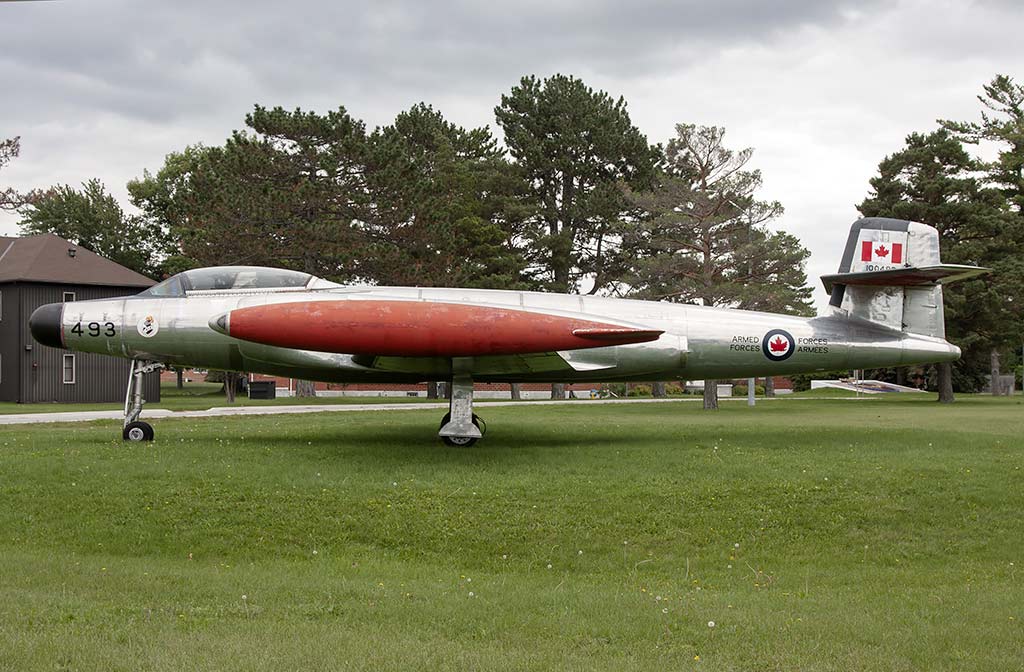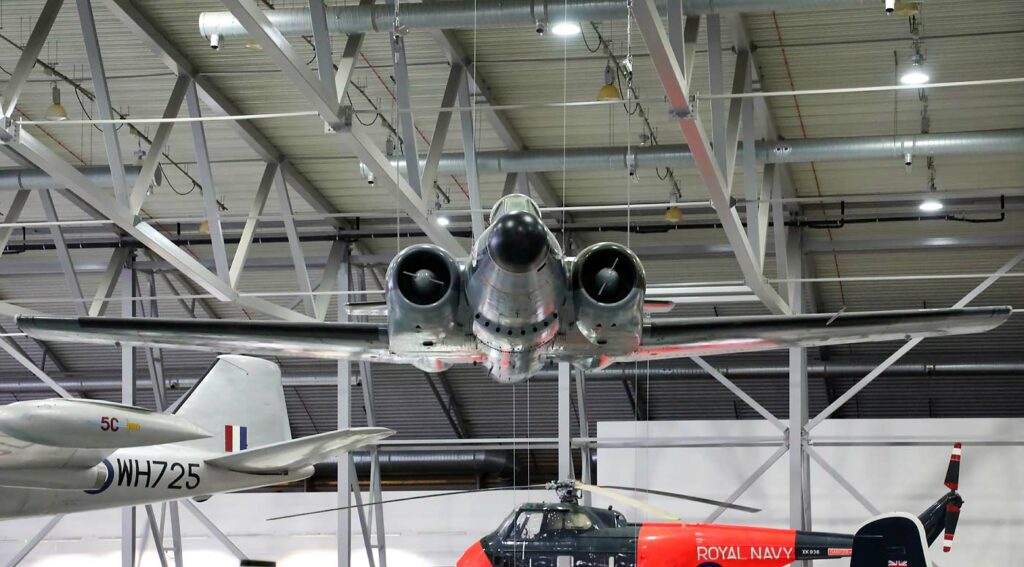The CF-100 is a Canadian twin-engine, all-weather interceptor, known for its robust design and sophisticated radar for its time.
In brief
The Avro Canada CF-100 Canuck, also known as the Clunk, was a distinctive all-weather interceptor aircraft designed during the Cold War’s early stages to address the Soviet bomber threat. This twin-engine, straight-wing jet was the only Canadian-designed fighter to enter mass production. First flying in 1950, it served primarily with the Royal Canadian Air Force (RCAF) and Canadian forces until the 1980s. Recognized for its advanced radar and electronic systems, it played a crucial role in North American air defense. The aircraft’s versatility allowed it to adapt to various roles, from interception to electronic warfare, demonstrating the ingenuity and capability of Canadian aerospace technology.
The Avro Canada CF-100 Canuck holds a unique place in aviation history as a symbol of Canada’s post-war emergence as a significant player in the aerospace industry. It stands as the only Canadian-designed fighter to see mass production and served as a critical component of North American air defense during the Cold War.

History of the Development of the Avro Canada CF-100 Canuck
In the late 1940s, as tensions escalated into what would become the Cold War, Canada recognized the need for a robust all-weather interceptor to defend its vast airspace against the threat of Soviet bombers. The Avro Canada CF-100 Canuck was developed in response to this need, with the goal of creating a powerful, radar-equipped, all-weather aircraft.
The program was launched by Avro Canada, a key player in Canadian aerospace, in the late 1940s. The aircraft first flew on 19 January 1950, demonstrating promising capabilities. Its design and development were driven by the urgent need for an effective air defense system, reflecting the geopolitical tensions and technological competition of the era.
While the CF-100 did not receive a specific NATO nickname, it was affectionately known as the “Clunk” due to the distinctive sound of its landing gear locking into place. The aircraft’s development was marked by rapid technological advancements and a pressing need for air defense modernization, leading to an interceptor that was both a product of its time and a testament to Canadian engineering prowess.
Design of the Avro Canada CF-100 Canuck
The Avro Canada CF-100 Canuck featured a straight wing and a twin-engine layout. It was designed to operate in harsh weather conditions, a necessity given Canada’s diverse climate. The aircraft’s structure was robust, allowing it to withstand the rigors of all-weather operations.
In terms of dimensions, the CF-100 had a length of 54 feet and a wingspan of 58 feet, or approximately 16.5 meters and 17.7 meters respectively. It weighed around 25,000 pounds (about 11,340 kilograms) when empty and could take off with a maximum weight of 45,000 pounds (approximately 20,412 kilograms).
One of the notable design features was its advanced radar and fire-control system, which allowed it to track and engage targets in all weather conditions. This capability was critical for its role as an interceptor, providing a significant advantage over earlier aircraft with limited night and bad weather operation abilities.
However, the aircraft was not without its drawbacks. The straight-wing design limited its top speed, and as jet technology rapidly evolved, newer aircraft with swept wings and more powerful engines soon surpassed the CF-100’s performance. Despite these limitations, its robustness, reliability, and advanced electronics ensured it remained a valuable asset for years.
Performance of the Avro Canada CF-100 Canuck
The CF-100’s performance was notable for its time. It was powered by two Avro Orenda turbojet engines, each producing significant thrust, which allowed the aircraft to reach speeds of up to 550 mph (885 km/h) and an operational ceiling of 45,000 feet (13,716 meters). Its range was approximately 1,320 miles (2,125 kilometers), making it capable of covering vast distances across Canadian territory.
When compared to its contemporaries, the CF-100 held its own as a reliable all-weather interceptor. Its strength lay in its radar-guided interception capabilities rather than sheer speed or maneuverability. While not the fastest aircraft of its era, its sophisticated electronics and operational flexibility allowed it to effectively counter potential threats, playing a crucial role in North America’s early warning and air defense strategy.
Variants of the Avro Canada CF-100 Canuck
The CF-100 underwent several modifications throughout its service life, resulting in various variants. The Mark 3 was the first major production variant, followed by the improved Mark 4 with more powerful engines and better radar. The Mark 5 was the definitive version, featuring further engine enhancements and an extended wingtip for improved performance.
Each variant brought refinements in speed, electronics, and operational capabilities, reflecting ongoing technological advancements and the evolving needs of the Royal Canadian Air Force. These variants ensured the CF-100 remained a versatile and capable component of Canada’s and NATO’s air defense well into the 1960s.

Military Use and Combat of the Avro Canada CF-100 Canuck
The CF-100 served primarily as an interceptor throughout its operational life, engaging in exercises and patrols to defend North American airspace. It was equipped with a variety of armaments, including cannons and rockets, enabling it to tackle a range of aerial threats.
While not extensively used in combat, its primary role was in deterrence and air defense during the tense years of the Cold War. The aircraft’s advanced radar and all-weather capabilities made it an essential asset for monitoring and protecting against potential Soviet bomber incursions.
The CF-100 was also exported to Belgium, demonstrating its international appeal and the trust placed in its capabilities. Over time, as more advanced aircraft entered service, the CF-100 was phased out in favor of newer models with superior speed and performance, such as the CF-101 Voodoo.
The Avro Canada CF-100 Canuck stands as a testament to Canadian innovation and determination during a critical period of global tension. Its development, performance, and service reflect the technological and strategic challenges of the Cold War era. As the only Canadian-designed fighter to enter mass production, it holds a special place in the history of aviation, symbolizing a period when Canada took a leading role in the technological race of the Cold War. Its legacy continues to influence Canadian aerospace and serves as a reminder of the nation’s capability and resilience.
Back to the Fighter Jet section.